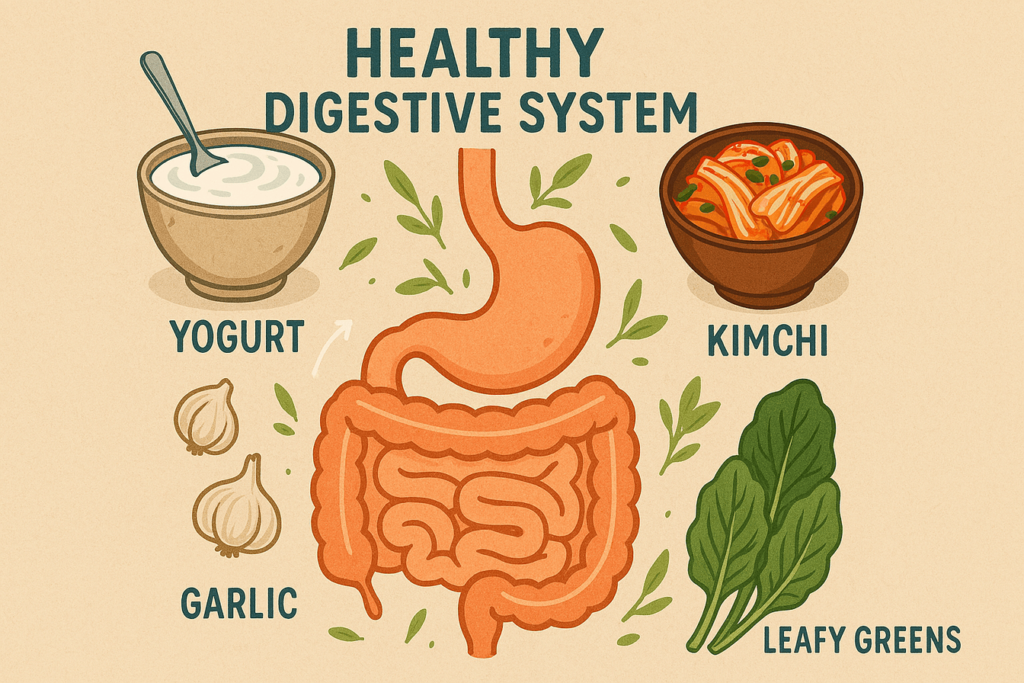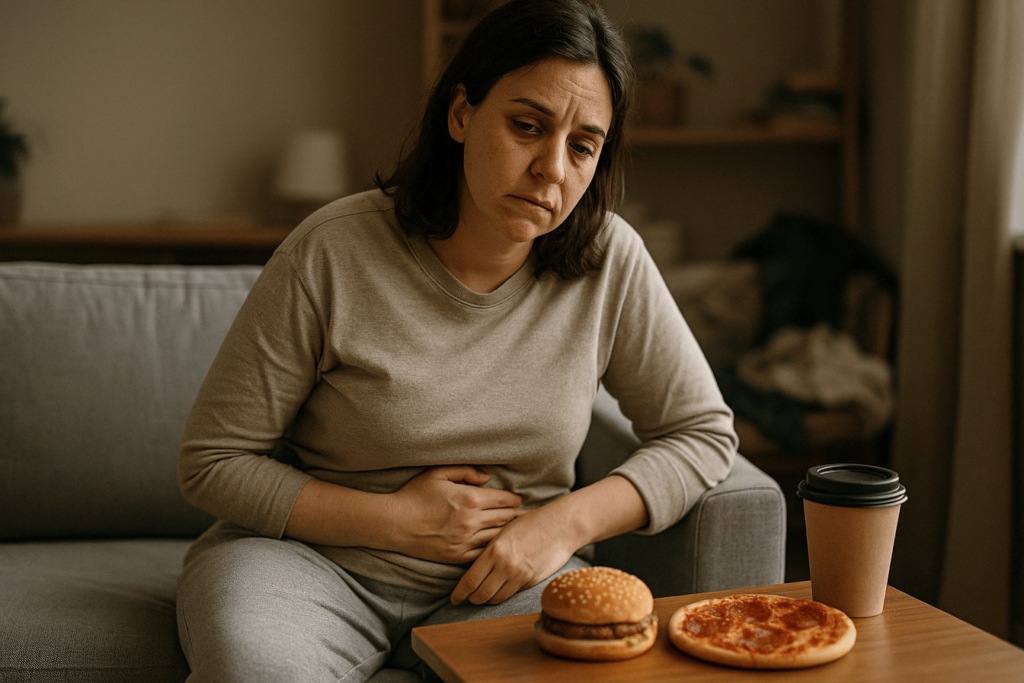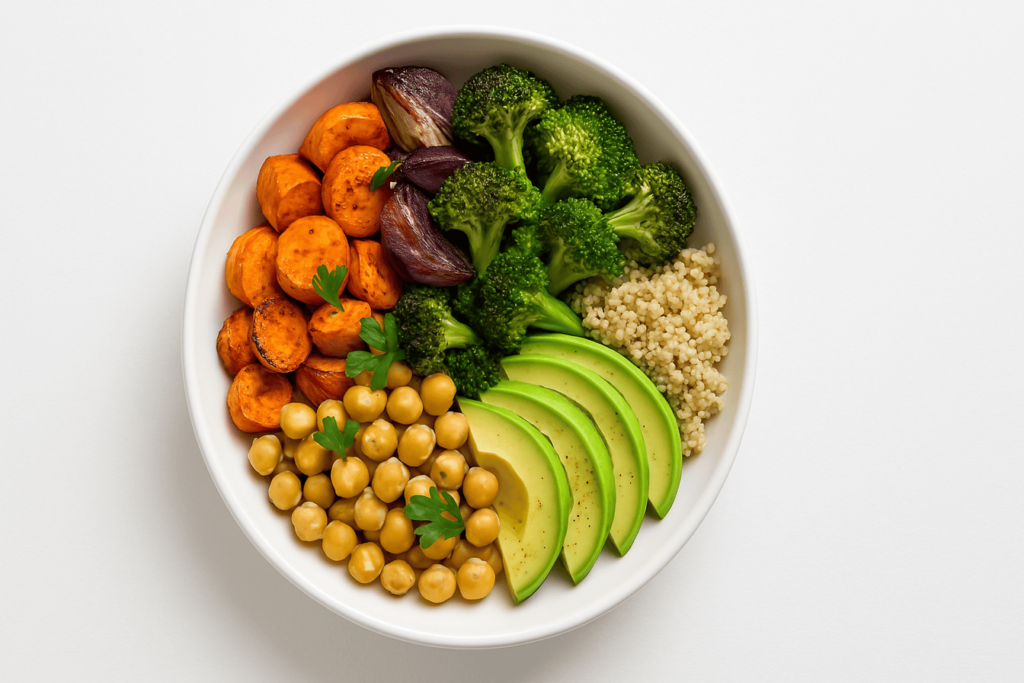Have you ever had days where you just don’t feel like yourself—like you’re worn out all the time, even if you sleep well or drink lots of coffee? Maybe your digestion feels sluggish, your skin is breaking out for no clear reason, or your mood just isn’t right. If these symptoms resonate with you, you’re not alone. It might be your body’s way of telling you it needs a break—and that’s where a detox diet could help reset your system and bring back your natural energy.
Participating in a detox diet offers an opportunity to revitalize yourself holistically. By eliminating toxins and introducing nourishing foods, you can experience increased vitality and mental clarity.
Taking this journey can help you develop a deeper connection with your health and well-being. So, why not dive in and explore the transformative benefits of a detox diet? Give your body the reset it deserves!

What Is a Detox Diet?
A detox diet is a short-term eating plan “intended to eliminate” toxins from the body and enhance overall health. The main goal is to give your digestive system a break while assisting your body’s natural detoxification processes, which are primarily managed by the liver, kidneys, skin, lungs, and even the gut.
But let’s pause right here—what exactly are “toxins”?
In the wellness world, “toxins” often refer to substances that may negatively affect our health, such as
- Processed sugars and fats
- Artificial additives
- Alcohol
- Environmental pollutants (like pesticides or heavy metals)
- Even chronic stress and poor sleep can contribute to internal imbalance
Your body has an incredible built-in system for eliminating harmful substances. However, the demands of modern life—such as processed foods, pollution, and sedentary lifestyles—can overwhelm these systems. A detox diet is designed to lighten the load on your organs and support their natural functions by incorporating clean, nourishing foods and making healthier lifestyle choices.
Common Types of Detox Diets (And Which One Might Work for You)
Not all detox diets are the same. Some are extreme and unsustainable, while others focus on gentle, whole-body nourishment. Understanding the different types can help you choose an approach that fits your lifestyle and health needs without stressing your body.
Here are some of the most common types of detox diets, explained in simple terms:
1. Juice Cleanses
A juice cleanse typically involves drinking only fresh fruit and vegetable juices for a set period, often 1 to 5 days. The idea is to flood your body with nutrients while giving your digestive system a break from solid food.
Pros:
- High in vitamins and antioxidants
- Can feel lighter and refreshed short-term
- Encourages hydration
Cons:
- Lacks fiber and protein
- Can spike blood sugar
- May lead to fatigue, headaches, or muscle loss if done too long
Best for:
Short-term reset (1-2 days max), especially for people who already eat fairly clean and want a nutrient boost.
Note: Juice cleanses aren’t suitable for people with blood sugar issues, certain medications, or those needing more calories for energy.
2. Whole Food Detoxes
This is one of the most balanced and sustainable detox methods. It involves eating only whole, unprocessed foods—think fresh fruits, vegetables, lean proteins, healthy fats, and lots of water. It often cuts out sugar, dairy, alcohol, caffeine, and gluten for a set period (usually 7–21 days).
Pros:
- Provides all essential nutrients
- Improves gut health and digestion
- Easier to stick with and transition into long-term habits
Cons:
- Requires meal planning and label reading
- Takes longer to see dramatic results
Best for:
Beginners and professionals alike who want to support their body naturally while building healthier long-term habits.
Tip: Consider this exercise more of a “clean eating reset” than a strict detox.
3. Intermittent Fasting
Intermittent fasting emphasizes when you eat rather than what you eat. A popular method is the 16:8 approach, where you fast for 16 hours and eat in an 8-hour window. Some also opt for a 24-hour fast once or twice a week.
Pros:
- It may improve insulin sensitivity and reduce inflammation
- Gives your digestive system regular breaks
- Supports cellular repair through autophagy
Cons:
- Can be difficult for beginners
- May cause low energy or irritability at first
- Not suitable for people with eating disorders or certain medical conditions
Best for:
People comfortable with structured routines who want to combine detox with fat loss or metabolic health improvements.
Source: Harvard Health—Intermittent Fasting
4. Elimination Diets
This type of detox focuses on identifying food sensitivities by temporarily eliminating common irritants (like dairy, gluten, soy, eggs, and processed foods) and then reintroducing them slowly to observe the body’s response.
Pros:
- Can uncover hidden food intolerances
- Improves digestion, skin, and mood in many people
- Encourages mindfulness about eating.
Cons:
- Requires strict tracking
- May be confusing without guidance
- Needs time and patience to see results
Best for:
People dealing with unexplained symptoms like bloating, acne, fatigue, or joint pain—especially when guided by a nutritionist or healthcare provider.
Source: National Library of Medicine—Elimination Diets and Food Sensitivities

Signs Your Body Might Need a Detox
Your body is smart. It sends signals when something isn’t working well. While the word “detox” is often overused in wellness discussions, there are real signs that your body may need a reset.
Here are some of the most common signs to watch out for:
1. Constant Fatigue (Even After a Good Night’s Sleep)
Waking up groggy, relying on caffeine, or feeling exhausted after light activities may indicate that your body is struggling to process waste effectively. An overwhelmed liver or digestive system—often from a poor diet, alcohol, or stress—can significantly lower energy levels.
Trusted Source: WebMD—Causes of Fatigue
2. Digestive Problems
Bloating, gas, constipation, and irregular bowel movements may signal digestive issues. These symptoms can indicate a sluggish digestive process or an imbalanced gut microbiome. A detox with fiber-rich foods, probiotics, and hydration can help “reset” your gut and enhance regularity.
The National Institutes of Health (NIH) highlight the importance of dietary fiber and hydration for digestive health: NIH – Fiber and Digestive Health
3. Skin Breakouts or Dull Complexion
Your skin is a major detox organ. Frequent breakouts, dryness, or dullness may signal your body’s struggle with waste elimination. Cutting out inflammatory foods like refined sugar and dairy, along with drinking more water, can enhance your skin’s appearance.
4. Brain Fog and Poor Focus
The “cloudy” feeling that makes it difficult to concentrate, remember things, or stay mentally sharp is known as brain fog. This condition is often associated with inflammation, a poor diet, lack of sleep, or toxic overload. A detox that includes foods rich in omega-3 fatty acids and antioxidants and proper hydration may help improve mental clarity.
According to a study published in Frontiers in Neurology, inflammation from diet and lifestyle plays a major role in cognitive function: Study: Inflammation and Brain Fog
5. Frequent Headaches or Muscle Aches
Tension headaches, migraines, and unexplained muscle soreness may indicate dehydration, insufficient nutrient intake, or even the accumulation of metabolic waste in the body. A detox strategy focusing on anti-inflammatory foods, hydration, and gentle movement can offer relief.
6. Mood Swings or Irritability
Your gut and brain are more interconnected than you might realize. When your gut isn’t functioning well, it can negatively impact serotonin production and blood sugar stability, both of which play crucial roles in influencing your mood. By improving your diet, cutting back on sugar, and supporting your gut health, you can often experience a significant emotional shift.
Did you know that about 90% of your serotonin is produced in your gut rather than your brain? This is why maintaining gut health is essential for emotional well-being.
7. Increased Sugar or Junk Food Cravings
Cravings for sugary, salty, or processed foods often stem from imbalances in blood sugar or gut microbiota. These cravings can create a vicious cycle, worsening the issues they originate from. A detox diet centered on whole foods can help reset taste preferences.
When to Pay Attention
If you consistently experience two or more of these symptoms, particularly if you lead a high-stress lifestyle or consume a diet heavy in processed foods, it might be time to give your body a rest.
A 7-day whole food reset can help your body find its natural balance without using extreme measures. This short detox is a simple way to get back on track.
Health Benefits of Detox Diets (When Done Right)
Here’s what you can realistically expect when a detox diet is done the right way:
1. Improved Digestion and Gut Health
A structured detox can give your digestive system a break by eliminating processed foods, excess sugar, and refined carbs while increasing fiber-rich vegetables, fruits, and whole grains. This process helps rebalance your gut, nourishing beneficial bacteria that support digestion and immune function. A healthy gut microbiome often reduces bloating and irregularity, improving food processing efficiency.
Study Reference: Harvard Health—The Microbiome and Gut Health
2. More Stable Energy Levels
Processed foods and sugary snacks cause energy spikes and crashes. During a detox, your body relies on complex carbohydrates, lean proteins, and healthy fats for steady energy. This transition helps you maintain consistent energy and reduces dependency on caffeine and sugar.
According to the Mayo Clinic, balanced meals with low-glycemic foods help regulate blood sugar and prevent fatigue. Mayo Clinic—Energy and Diet
3. Clearer Skin and Better Complexion
Your skin plays a vital role in detoxification and often shows improvement when the liver, kidneys, and sweat glands effectively eliminate toxins. Many people experience fewer breakouts and a healthier glow within a week or two of clean eating.
Additionally, hydration is crucial; drinking more water helps flush out waste and keeps the skin clear and plump.
4. Reduced Inflammation
Chronic inflammation can lead to various health issues, including joint pain, digestive problems, heart disease, and autoimmune conditions. Adopting a clean detox diet that includes anti-inflammatory foods, such as leafy greens, berries, turmeric, nuts, and omega-3 fatty acids, can help reduce this internal inflammation.
A study in the Journal of Nutrition found that dietary changes alone can significantly reduce inflammatory markers in the body.
Study: Anti-Inflammatory Diets and Health
5. Better Sleep and Mental Clarity
When your digestion improves and your blood sugar stabilizes, you often experience better sleep and improved mental focus. Detox diets eliminate common sleep disruptors such as caffeine, alcohol, and heavy late-night meals. The result is a calmer nervous system and more restful sleep.
Additionally, reducing toxins means that your brain doesn’t have to work as hard. Many people report enhanced concentration, improved memory, and a decrease in “brain fog” just a few days after starting a detox.
6. Kickstart for Healthy Habits
Let’s be honest: Many of us could benefit from a fresh start from time to time. A detox, especially one based on whole foods and scientific principles rather than trends, can serve as a powerful reset button. It can help you:
– Reconnect with your hunger cues.
– Break free from emotional or mindless eating.
– Feel more in control of your health choices.
This momentum can encourage lasting lifestyle changes beyond the detox period.
7. Weight Loss (As a Natural Side Effect)
Weight loss shouldn’t be the primary goal of a detox, but it can happen naturally by reducing bloating and improving digestion. Such results can motivate lasting lifestyle changes. Remember, a detox isn’t a short-term diet; focus on creating a sustainable, healthy baseline instead of quick fixes.

Your Body Already Detoxes Itself—And Does It Well
Your liver, kidneys, lungs, skin, digestive tract, and lymphatic system all contribute to detoxification. Daily, these organs filter out waste, excess hormones, environmental toxins, and metabolic byproducts.
- The liver converts harmful substances into less toxic forms for elimination.
- The kidneys filter blood and flush waste out through urine.
- The gut processes food waste while also influencing mood and immune function.
- The skin eliminates waste through sweat.
- The lungs expel carbon dioxide and other airborne toxins.
These systems do not require a detox tea to function. They need less interference from alcohol, processed foods, pollution, stress, and sleep deprivation.
So Why Do People Feel Better on a Detox?
Here’s the real secret: the body functions better when inflammatory and processed foods are eliminated, not when a “cleanse” is performed.
During most detox diets, people naturally
- Drink more water
- Eat more whole foods
- Avoid alcohol, sugar, and refined carbs
- Get more sleep and rest
- Reduce caffeine intake
- Add movement or gentle exercise
These changes alone can lead to
- Reduced bloating
- More energy
- Clearer thinking
- Better sleep
- Improved digestion
The Problem With Extreme Detoxes
While there are benefits to gentle detox approaches, extreme or prolonged detox diets can be harmful. These include:
Very low-calorie cleanses that deprive the body of essential nutrients
Juice-only diets that spike blood sugar and lack fiber or protein
“Detox” supplements that aren’t regulated and can stress the liver or kidneys
Colon cleanses or laxatives that can disrupt gut flora and cause dehydration
These approaches may cause short-term weight loss, but they often lead to rebound effects—like fatigue, muscle loss, and binge eating.
Warning from Experts: According to the British Dietetic Association (BDA), most detox products are unnecessary at best—and dangerous at worst.
Safe and Sustainable Ways to Start a Detox
A sustainable detox is all about nourishing your body, not punishing it. The focus should be on gentle, supportive changes that you can realistically stick with—not extremes that leave you drained or frustrated.
Here’s how to start a detox diet that’s safe, effective, and doable:
1. Set a Realistic Timeframe (Start With 5–7 Days)
You don’t have to change your life all at once. A short detox of 5 to 7 days allows your body to recalibrate without feeling overwhelmed. If you enjoy this process, you can gradually extend it or incorporate elements into your long-term routine.
Tip: Mark your detox start date on your calendar and prep the week before—shop for groceries, plan meals, and mentally commit.
2. Focus on Whole, Anti-Inflammatory Foods
At the heart of every smart detox is clean eating. Here’s what to include in your diet:
- Fresh fruits and vegetables (especially leafy greens, beets, berries, and cruciferous veggies)
- Whole grains (like brown rice, quinoa, and oats)
- Healthy fats (avocados, olive oil, chia seeds, flaxseeds)
- Lean proteins (organic eggs, legumes, wild-caught fish)
- Herbs and spices (turmeric, ginger, parsley, garlic—all-natural detoxifiers)
- Plenty of water (add lemon, cucumber, or mint for variety)
Tip: Make meals colorful. The more natural color on your plate, the wider the range of antioxidants you’re getting.

3. Cut Out (Or Reduce) the Following
For just one week, try eliminating or cutting back on:
- Processed sugar
- White flour and refined carbs
- Alcohol
- Caffeine (or at least reduce it)
- Artificial additives, colors, and preservatives
- Fried foods and trans fats
It’s difficult initially, but most people find cravings lessen by Day 3, and energy levels increase by the end of the week.
4. Drink More Water Than Usual
Hydration is essential for detoxification. Water helps flush out waste through urine and sweat, supports digestion, and even improves focus.
Aim to drink:
– 2 to 3 liters of water daily
– Herbal teas such as dandelion, ginger, or peppermint can aid digestion and support liver function.
Pro Tip: Start your day with warm lemon water—it gently stimulates the liver and kickstarts digestion.
5. Support Detox Through Lifestyle, Not Just Diet
Detoxing involves more than just dietary changes. Here are some simple lifestyle adjustments that can significantly enhance your detox results:
1. Aim for 7–9 hours of sleep each night: During rest, your body performs vital repair and detoxification processes.
2. Engage in daily movement: Activities like brisk walking, yoga, or light cardio can help improve circulation and promote lymphatic flow.
3. Limit screen time and manage stress: Mental “toxins” can be just as draining as physical ones. Instead of endlessly scrolling through your phone, try journaling, stretching, or listening to a podcast.
4. Consider dry brushing or using a sauna (optional): These practices can stimulate the lymphatic system and assist in skin detoxification.
6. Listen to Your Body
Everyone reacts differently to detox diets. If you feel dizzy, tired, or irritable, it could mean you aren’t eating enough or that the detox is too strict. Don’t ignore your discomfort just because the plan says you should.
7. Reintroduce Foods Slowly Post-Detox
After your detox period, it’s crucial to avoid processed or sugary foods immediately. Instead, gradually reintroduce items such as dairy, gluten, caffeine, or alcohol one at a time. This approach allows you to monitor your body’s reactions and identify any hidden sensitivities.
Bonus Tip: Keep a simple detox journal. Jot down what you eat, how you feel, your energy levels, and any physical changes. You might be surprised at the patterns you discover.
Who Should Avoid Detox Diets
Despite their potential benefits, detox diets aren’t appropriate for everyone. They’re generally not recommended for:
- Pregnant or breastfeeding women
- Children or adolescents
- People with diabetes, eating disorders, or certain chronic conditions
- Those taking specific medications that require consistent food intake
- Individuals with a history of heart disease or blood pressure issues
Always consult a healthcare provider before starting any detox program, especially if you have underlying health conditions or take medications.
Conclusion: Taking the First Step Toward Natural Health
The journey to optimal health is about making informed choices that support your body’s natural abilities rather than striving for perfection. Detox diets, when done mindfully, can help us reconnect with our bodies and establish healthier habits.
Detoxification is a continuous process that your body performs daily, and you can support it with nutritious foods, hydration, regular movement, quality sleep, and stress management.
Whether you follow a structured detox program or simply add more detox-supporting foods to your routine, consistency and paying attention to your body’s signals are essential.
To start your reset, try eliminating one category of processed food this week and incorporating more whole foods. Small, consistent changes can lead to sustainable results on your journey to natural health.
Disclaimer
This article is for informational purposes only and does not constitute medical advice. Always consult a qualified healthcare provider before starting any new diet or wellness program, especially if you have underlying health conditions or take medications.






